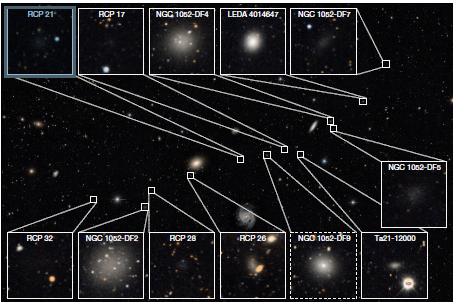
Over the past four years, Yale astronomer Pieter van Dokkum and his collaborators have identified a pair of galaxies, DF2 and DF4, that have little or no dark matter and are located in close proximity to each other.
This cosmic togetherness is no coincidence, according to a new study in Nature led by van Dokkum, the Sol Goldman Family Professor of Astronomy and professor of physics in Yale’s Faculty of Arts and Sciences. The researchers say DF2 and DF4 — along with a handful of other galaxies — formed in a line after a “bullet” collision of two original galaxies about eight billion years ago.
The researchers said the colliding galaxies’ dark matter — an invisible, theorized material that emits no light or energy — continued traveling through space, unimpeded. But star-making gas from the colliding galaxies reacted violently. As it cooled and contracted, the gas created a tidy row of up to 10 new galaxies.
“We’re seeing the entire aftermath of this collision, laid out in the sky,” van Dokkum said. “There are these new galaxies with almost no dark matter, and then there are two objects at the leading edge of the row that we think may be the remnants of dark matter from the original galaxies.”
Going forward, the findings present an opportunity to study whether dark matter can interact with itself. The findings also provide an explanation for the existence of galaxies lacking dark matter.
“Everything fits now,” van Dokkum said. “We see the mechanism.”
Co-authors of the study were Zili Shen, Michael Keim, Dhruba Dutta Chowdhury, and Daisuke Nagai, all from Yale, and former Yale researcher Shany Danieli.
This Article has been extracted from the Yale News article of May 20, 2022. For more information, please see the full Yale News article, and the article in Nature linked below.